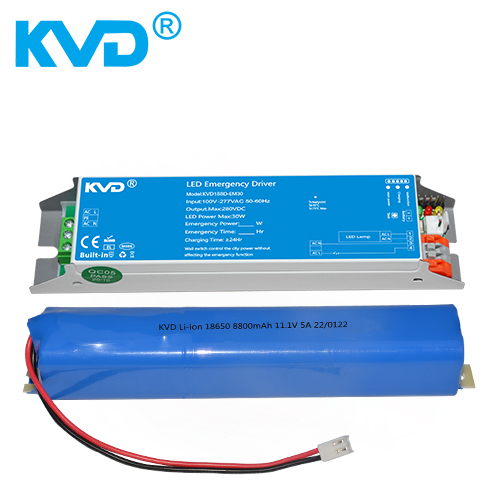What is an LED emergency driver
The LED emergency driver, unlike the LED drivers, is used to convert an ordinary light into a non-maintained emergency light. LED emergency driver monitors and manages the power source for an LED.
While the power mains are on, this driver supplies power to the LED from the mains and keeps charging the battery integrated with it.
In case, the primaries go down, because of any reason, the LED emergency driver switches the power supply to the battery in the split of a second and averts the light from switching off.
Unlike normal LED drivers, these drivers operate off of a battery and supply configured power to the LED fixture in case of a power outage. Generally, these drivers are configured to supply less power to the LED fixture than required.
Less power is supplied to LED fixtures to decrease the consumption of battery charge and increase the duration of time the light will remain illuminated on battery power.
However, the supply of energy is configurable, and some manufacturers offer pre-customized LED emergency drivers based on one’s need.
With the basics done, let’s dive into details that you should be looking at while selecting LED emergency drivers.
Voltage requirements
Voltage can be understood as an electromotive force, which is a quantitative expression of the potential difference between the two points. It allows the charge to flow smoothly to ensure the lightning LED. Electrical appliances use ‘V’ to denote voltage that they will consume.
Every LED fixture comes with a specified voltage. Before deciding on an LED emergency driver, ensure that you are aware of the voltage requirements.
There are two types of voltages. Input voltage is the voltage that an LED emergency driver can take in, and output voltage, also known as Voltage flow (Vf), or Output Voltage, is the voltage that the driver can provide.
It is crucial that the flow of the output voltage matches the voltage requirements of the LED fixture.
In the above Sanforce Emergency LED driver, the output voltage range is 180-280V. This means that the voltage range can be configured to the exact requirement of the LED fixture.
However, any LED fixture which has a voltage requirement lower or higher than the given range, cannot be installed with an LED emergency driver.


